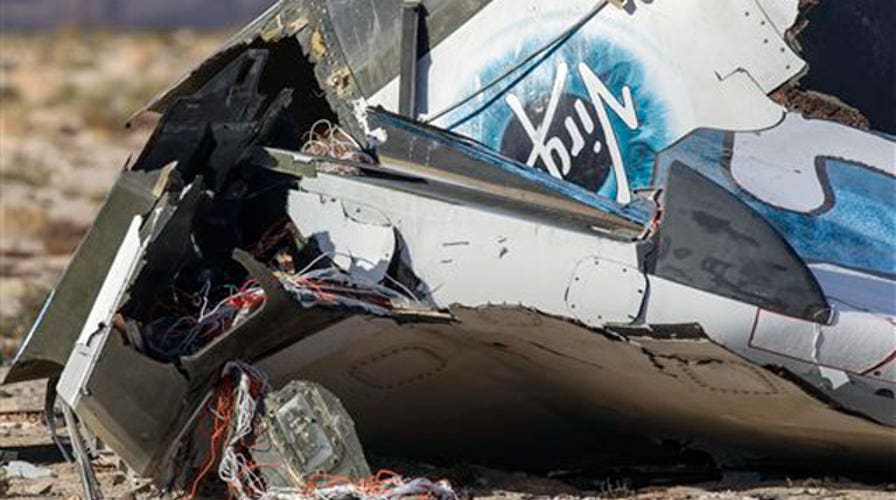NTSB: Virgin Galactic crash possibly due to pilot error
William La Jeunesse reports from Los Angeles, California
The National Transportation Safety Board said late Monday that tiny pieces of debris from the wreckage of Virgin Galactic's SpaceShipTwo were found 35 miles from the main crash site.
Acting NTSB chairman Christopher Hart said that the pieces could have been carried over that distance by the wind, but did not say whether that was the case. The main wreckage from Friday's crash is spread over a 5-mile area in the Mojave Desert.
Earlier Monday, Hart said that Hart said cockpit video and data showed that the co-pilot unlocked SpaceShipTwo's unique "feathering" system earlier than planned. The system works somewhat like the wing flaps that airplanes use to slow for landing -- except that SpaceShipTwo's twin tails rotate up at a far more extreme angle, to a position that creates strong resistance and slows the descent.
But while the co-pilot unlocked the system before planned, that action alone should not have been enough to change the craft's configuration. Activating the feathering system requires the pulling of a lever, not unlike a gun fires only when the trigger is pulled, not just because the safety has been disengaged.
That information raises the question of why the co-pilot activated the system when he did, as well as why the tails rotated without the co-pilot starting them. The co-pilot was killed in the crash, while the pilot was badly injured after parachuting out of the ship.
NTSB spokesman Peter Knudson said Monday that investigators believe once the feathers were unlocked, "aerodynamic forces" buffeting the craft as it hurtled along about 760 mph caused the feathers to start rotating. Within a few seconds, the craft began to disintegrate, NTSB investigators determined.
Knudson stressed that a final cause will take months to determine, and that investigators were looking into other factors, including pilot training, mechanical failure and design flaws.
The ultimate goal of Virgin Galactic co-owner Richard Branson is to create an industry that can move people around the globe in a fraction of the current time it takes passenger jets, by rocketing them into space and back down.
But the company now lacks not only a craft to fly, but also an understanding of what caused the crash.
Though rival companies also are pushing ahead, the dawn of space tourism seems to have been pushed beyond the horizon yet again.
SpaceShipTwo has been under development for years, and Branson originally predicted passengers would be enjoying the wonders of flight by now. In the weeks before the crash, he said he hoped to fly in 2015.
Branson still plans to be on the maiden voyage, with his family. He said that day will not come before a new round of crew-only flights.
"We need to be absolutely certain our spaceship has been thoroughly tested -- and that it will be," he said. "And once it's thoroughly tested, and we can go to space, we will go to space."
Friday's crash could trigger increased government regulation.
To give the fledgling commercial space industry space to innovate, the Federal Aviation Administration has not overregulated test flights during the past decade, according to Diane Howard, an assistant professor at Embry-Riddle Aeronautical University who specializes in space law.
But the crash could allow the FAA to propose new rules that would affect future Virgin Galactic flights, and "it will be very interesting to see how Congress and the FAA and industry respond," Howard said.
The FAA did not immediately comment Monday. The agency is able to initiate a rule-making process that would affect the design or operation of a spacecraft involved in a fatal accident, but is unlikely to do so before the end of the NTSB's investigation.
The Associated Press contributed to this report.


